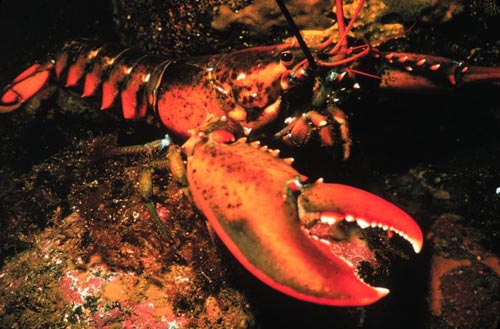- Pleocyemata
Taxobox
name = Pleocyemata

image_width = 250px
image_caption =American lobster , "Homarus americanus"
regnum =Animal ia
phylum =Arthropod a
subphylum =Crustacea
classis =Malacostraca
ordo =Decapoda
subordo = Pleocyemata
subordo_authority =Burkenroad , 1963
subdivision_ranks = Infraorders
subdivision =Caridea Stenopodidea
PolychelidaAchelata Astacidea Thalassinidea Anomura
BrachyuraPleocyemata is a sub-order of decapod crustaceans, erected by Martin Burkenroad in 1963 [cite journal | quotes=no|author=Burkenroad, M. D.|year=1963|title=The evolution of the Eucarida (Crustacea, Eumalacostraca), in relation to the fossil record|journal=Tulane Studies in Geology|issue=1|pages=1–17 | unused_data=|volume-2] . Burkenroad's classification replaced the earlier sub-orders of
Natantia andReptantia with the monophyletic groups Dendrobranchiata (prawn s) and Pleocyemata. Pleocyemata contains all the members of theReptantia (which is still used, but at a lower rank--this includes crabs, lobsters, crayfish, and others), as well as theStenopodidea (which contains the so-called "boxer shrimp" or "barber-pole shrimp"), and Caridea, which contains all the true shrimp.These taxa are united by a number of features, the most important of which is that the fertilised eggs are incubated by the female, and remain stuck to the
pleopod s (swimming legs) until they are ready to hatch. It is this characteristic that gives the group its name.References
Wikimedia Foundation. 2010.
